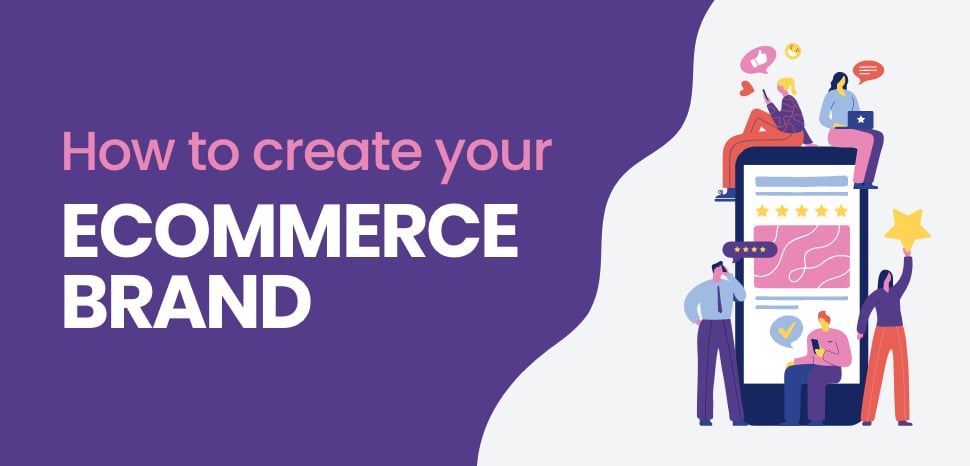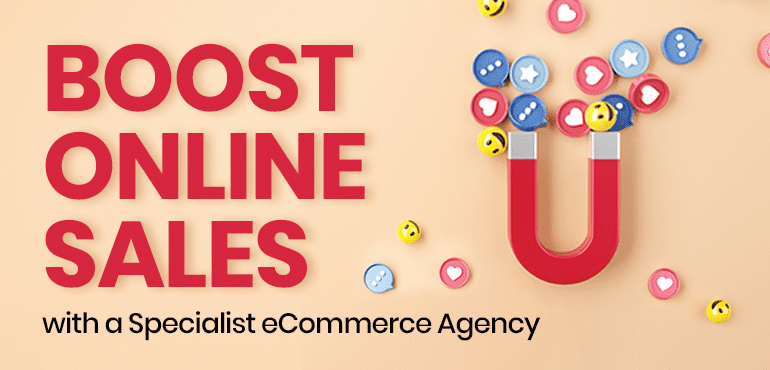Where do I begin building a successful eCommerce brand?

Article topics
- Market research
- Finding and nurturing your audience
- Creating a brand persona
- Authenticity
- Tell your brand story
- Quality matters
- Outstanding user experiences
- Conclusion
Creating and developing an eCommerce brand is challenging. There’s lots to consider, research to be done and decisions to be made. But getting your eCommerce brand off the ground isn’t as difficult as you might think.
To be successful, your eCommerce brand must be well planned, well researched and well executed. It will need to cut through in an increasingly noisy online marketplace. It should appeal to specific consumer segments, have emotional resonance and offer a buy-in to an aspirational lifestyle. Or your brand might represent a simple and elegant solution to a problem or satisfy a specific consumer need. Above all, your brand must offer authenticity and value for your audience and consumers.
The first step to building your eCommerce brand is understanding your marketplace.

Market research
Location
Where will your brand be visible: locally, nationally, internationally, globally? The territories in which your brand operates will shape its look, persona and message. A local brand might appeal to a particular community or consumers with specific needs, in a single language within a shared culture: trades people, local retailers, small businesses etc. On the other hand, a global brand must communicate in many different languages and appeal to multiple cultures, so that it engages the widest possible audience—consider how brand taglines translate or what images might be inappropriate for some countries or cultures.
Competitors
Knowing how your competitors operate can give you good insights into what works (and what doesn’t) in a particular marketplace. Research how they market their products and look for gaps: what are they not saying about a product or service that you think consumers might respond to? Where are your competitors advertising? Could you place your brand somewhere your competitors have not, to reach part of the marketplace that they are neglecting? For example, using live events, out of home advertising, PPC ads and social media.

Finding and nurturing your audience
Knowing your audience is vital. There are no shortcuts to finding out about them. Engage with consumers in your marketplace by conducting surveys and questionnaires. Use online forums, Quora, Reddit, Facebook groups and tools such as Survey Monkey and Google Forms. This qualitative data will offer insights into consumer behaviour, habits and preferences.
Depending on your product or service, another good way of connecting with your potential audience is to find where they are, where they congregate and interact with each other. For example, if your eCommerce business sells orchestral musical instrument accessories and consumables, you would likely find your audience in places such as classical music forums, Facebook groups and in chatrooms of music retailers, manufacturers and venues. Look at thread topics, frequent questions, see what delights and frustrates people. Start to build a picture of what your potential audience is like and how your brand might appeal to them.
If you are rebranding, use data that you already have to identify which audience segments are not engaging with your products or services. Consider how the new brand will appeal to them: is there an age group gap in your audience, a location underrepresented or other segments missing?
Remember, your audience is not fixed. It’s not a homogenous mass. It’s made up of many individuals. It’s fluid and will shift over time. As your brand develops you should continue to optimise and personalise your eCommerce website and EDM to ensure that your brand remains relevant and valuable.
When you have sufficient insight about your audience, compose a brand statement. This could include what your brand offers, how your brand differs from competitors or sum up the values that your brand embodies.

Creating a brand persona
Archetypes
Your brand persona, or personality, is how your audience and consumers will perceive your brand. Thinking of your brand in terms of personality helps its appeal and focuses design and marketing. Common archetypes include:

The Magician – fulfils dreams.
Think Disney. It’s a media company with a brand persona that sells a fantasy world which can be applied
to a wide range of products (Disney Stores). It’s what the Disney brand represents that sells.

The Outlaw – revolution!
The outlaw archetype is bold and brazen. It’s confrontational and seeks
to disrupt and appeals to those consumers who identify as non-conformists. Think Diesel or how Virgin used to be.

The Caregiver – nurturing and trustworthy.
The opposite of confrontational, the caregiver is kind and compassionate.
A good example of the caregiver archetype brand is Johnson & Johnson.
There are many other brand archetypes, such as Sage, Hero, Jester, Innocent, Explorer, Lover, Creator, Everyman. The list goes on. There is overlap between archetypes and your brand persona might include attributes from several.
Brand persona also includes elements such as logo and website design, colours, fonts, style and tone of voice. Collectively these attributes, the elements of brand persona, are captured in a set of ‘brand guidelines’. The purpose of your brand guidelines is to ensure that your website, shopping cart, advertising, social media, merchandising etc. all have the same aesthetic and voice. This continuity will project your brand, making it more recognisable and more memorable.
Reflecting your audience
Think of your brand as a mirror. It should reflect your audiences’ desires, aspirations and values. Your graphic design should appeal to your audience. The style and tone of your brand voice should resonate—the right tone, phrasing and terminology will make your brand credible to your audience and consumers.
It’s not necessary to reflect your audience in its entirety. You could take a single attribute of your audience to focus on, reflecting a through line or unifying trait, pointing the mirror in a particular direction and framing one aspect or image of your audience. See where your competitors are tilting their mirrors and tilt yours at a slightly different angle.

Authenticity
If your brand is making a promise, your audience and consumers expect that promise to be kept, especially these days when, as studies have shown, many consumers (particularly Millennials and Gen Zs) are more sceptical about brands, being drawn to those brands that align with their sensibilities and values. Today’s consumer wants their brands to have integrity and to stand for something, especially if that something makes the world a better place.
Contemporary consumers want brands where there is no disconnect between the values that they project and the behaviour of their CEOs or the morality of the manufacturing methods of their products. H&M came under fire for how its clothes are made, and there was a backlash against the discriminatory attitude of ANF’s CEO to normal shaped women. Consumers want brands that authentically represent values and sensibilities that fit with their own, and if your brand comes over as unauthentic, you can expect your reputation to suffer and sales to drop.
A sure way to kill authenticity is to be dishonest in your advertising. Be honest and transparent about what your products and services can deliver. Misleading (intentionally or not) your audience and consumers will break trust and drive them to your competitors.

Tell your brand story
Building trust
Effectively communicating your brand narrative helps build a deeper connection with your audience. Humans have evolved to respond to stories. Research shows that we are more deeply affected by information presented as story and narrative. The telling of and listening to a good story is called neural coupling and it’s powerful.
The effect of neural coupling: comprehension, anticipation and receptivity help build trust. But you can’t just tell any old story. It must be relevant and compelling. It’s a narrative created by—inspired by— your brand, your business and the people that make it, and perhaps most importantly, your audience. Put your audience at the centre of your brand story.
Brand affiliation
To help galvanise your brand’s authenticity, and to add to your overarching brand narrative, brand tie-ups can work. Align your brand with a cause that resonates with your audience. This worthwhile endeavour (charity or fundraising etc.) doesn’t necessarily have to be connected with your business sector. Ensure that you choose a single tie-up to focus on, to avoid diluting its value to your brand.
Noteworthy tie-ups include, HSBC and the WWF, Ikea and Save the Children, and Shell’s sponsorship of Wildlife Photographer of the Year.
Tell your brand story through social media, marketing collateral, anything that relates to your brand: blog, case studies, photo stories, short videos, testimonials, customer experiences, advertising, product placement and affiliations.
Quality matters
Just as valuable as your products and services are the overall experiences that your audience and consumers have with your brand. From the moment they click a link to your website to the moment they leave a positive review and recommend you (or not) on social media, is where your brand will succeed or fail. A crucial part of the customer experience arc is user experience (UX)—how much friction you can eliminate in consumer journeys on your eCommerce website.

Outstanding user experiences
How your audience and consumers interact with your eCommerce website is a significant part of building your brand. If you can provide easy, logical, fast, secure, frictionless UX you will be the first choice for many people who want your products and services.
Users should always be at the heart of web design, from discovery phase, to deployment, to ongoing optimisation. Successful websites are designed for how people think. Websites created and optimised with an understanding of user behaviour and thinking patterns provide higher value UX.
Consistently outstanding, human-centred UX will increase engagement and lift conversion rates. Ensuring that your audience and consumers have easy, frictionless and satisfying experiences on your website is good for them, good for business and great for building your eCommerce brand.
Conclusion
Creating a successful eCommerce brand is only the beginning. Nurturing it as it grows and evolves is the next challenge. But if you take care of some basics you will have solid foundations on which to build. A successful eCommerce brand will know its audience, delivering personalised, relevant and valuable experiences that resonate, helping to build trust and authentic relationships. Remember, think of your eCommerce brand as a mirror reflecting your audience, their desires, their aspirations, and their values.
If you would like advice on creating an eCommerce brand, or your existing business is ready to rebrand, get in touch today for a chat with one of our eCommerce brand specialists and find out how we can help grow your eCommerce business.


 Back
Back
